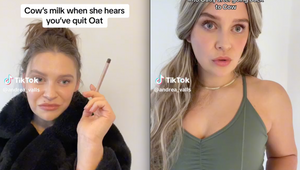
Measuring What Matters for Creator Marketing

Creator marketing has rapidly grown since 2015, and a familiar question keeps cropping up - 'How do I know if this worked?' In the era of attribution and lift, marketers have gotten used to being able to measure everything, and now, they expect to know exactly what works, how well it works, and how to make it better.
To be fair, marketers have always known that there are nuances to how 'standard' metrics are calculated: CPV varies by platform, MAU calculations are not the same across the spectrum, and more. If we’re being honest with ourselves, this has been a heightened challenge for creator marketing, given the tremendous growth in such a short period of time. And the measurement ecosystem has rushed to fill these analytic gaps, whether it be through stitching metrics together in a spreadsheet or developing first-party 'black box' metrics that don’t align with overall media strategies.
Luckily, the first step towards measuring creator content does not involve solving new problems but understanding the nature of media itself. Too often, brand managers treat their campaigns as experiments or PR efforts, managed ad hoc and separately from traditional media campaigns. Unfortunately, this won’t work.
Younger generations, and especially gen z, see creators as a central component of the content they consume — often at the expense of more traditional media. Our recent study, Reaching the Unreachables, found that more than half of gen z's and a third of millennials spend ZERO HOURS on ad-supported TV on any given day. Brands simply cannot reach this important audience via traditional media.
Media has evolved consistently over the past century - from radio, television, digital, social, mobile, and creators are now the next evolution. Creator marketing is not something that should live separately from media planning and brand building. It needs to be an integral part of the brand and communications strategies and, as such, should be held to the same standards as other measured media.
As a result, we need much more consistency around what is measured, why, and how. Just as with TV or retail media, marketers should be able to justify any activation on a financial basis and with a set of KPIs that ladder up to the goal or goals the brand is trying to achieve.
Of course, we already have plenty of metrics we can use, like Brand and Offline Sales Lift, attribution, and MMM. These can be meaningful ways to measure impact, but without standardisation across them, they are open to manipulation. Instead, we should adopt a consistent set of practices by which to judge our efforts.
The ANA has kicked off this dialogue with its 2022 Influencer Marketing Measurement Guidelines. These guidelines cover three major areas of measurement: awareness, engagement, and conversion, with recommendations for a series of fundamental metrics, such as Cost Per Reach and Engagement Rates. They also map these across the different platforms, providing clear guidelines for how to compile them using whatever data the platforms make available. Encouragingly, they avoided using 'black box' or proprietary metrics like earned media value, which cannot be incorporated into overall media measurement. Still, the ANA guidelines are only a starting point. The entire document is only a few pages long and leaves more questions than answers. How does, for example, the clear difference in video view metrics translate to a return on the media investment? There's still work to be done.
As the Creator Economy continues to grow and evolve, measurement needs to grow with it. We need to ensure that we bring the same rigor in measuring success and impact to it that we do to all media.















